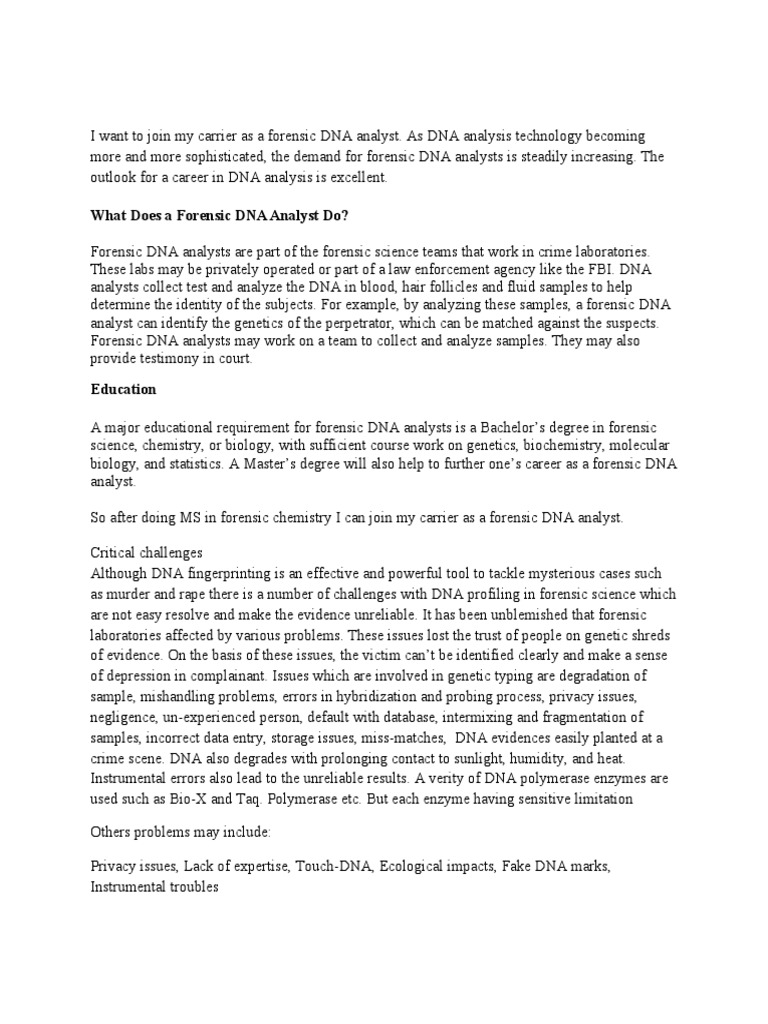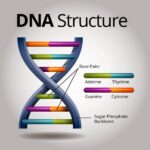DNA analysis has revolutionized forensic investigations, emerging as an indispensable tool for identifying suspects, exonerating the wrongly accused, and piecing together the puzzle of criminal events. Its precision and reliability stem from the uniqueness of each individual’s genetic blueprint. This technology has dramatically altered the landscape of criminal justice.
I. Identification of Suspects and Victims
At the heart of forensic DNA analysis lies its ability to establish identity. This process relies on comparing DNA profiles generated from crime scene evidence with those of potential suspects or from a database of known offenders. It is an invaluable asset.
A. DNA Profiling Techniques: STR Analysis
Short Tandem Repeat (STR) analysis is the cornerstone of modern DNA profiling. STRs are short, repetitive sequences of DNA that vary in length between individuals. Analyzing multiple STR loci provides a highly discriminating DNA profile. Capillary electrophoresis is used to separate DNA fragments by size, which are then detected by fluorescence. The resulting electropherogram is carefully scrutinized.
B. Familial DNA Searching
In cases where a direct match is not found, familial DNA searching can be employed. This technique identifies potential relatives of the suspect, providing investigative leads. Ethical considerations and privacy concerns surrounding familial searching are continuously debated, with the potential for revealing sensitive family information.
C. Mitochondrial DNA Analysis
When nuclear DNA is degraded or unavailable, mitochondrial DNA (mtDNA) analysis can be used. mtDNA is inherited maternally and present in multiple copies per cell. This makes it a suitable option for analyzing hair shafts, bones, and teeth. While mtDNA analysis offers less discriminatory power than STR analysis, it can still provide valuable evidence in certain cases. Phylogenetic analysis of mtDNA can trace maternal lineages back thousands of years.
II. Crime Scene Investigation and Evidence Collection
The effectiveness of DNA analysis hinges on proper crime scene investigation and evidence collection. Maintaining the chain of custody is essential.
A. Locard’s Exchange Principle
The fundamental principle guiding crime scene investigation is Locard’s Exchange Principle, which states that every contact leaves a trace. Therefore, meticulous collection of biological evidence, such as blood, saliva, semen, hair, and skin cells, is critical. Forensic scientists utilize sterile techniques to prevent contamination.
B. Collection and Preservation Techniques
Different types of biological evidence require specific collection and preservation techniques. For example, liquid blood is typically collected on sterile gauze and allowed to air dry, while dried stains are scraped or swabbed. Proper storage conditions, such as refrigeration or freezing, are crucial to prevent DNA degradation. The goal is to maintain the integrity of the DNA for accurate analysis.
C. Contamination Prevention
Preventing contamination is paramount to ensuring the reliability of DNA evidence. Crime scene investigators and laboratory personnel wear protective gear, such as gloves, masks, and lab coats, to minimize the risk of introducing foreign DNA. Designated areas are used for evidence processing to further mitigate contamination. The use of positive and negative controls during DNA analysis helps to detect any potential contamination issues.
III. DNA Databases and Cold Cases
DNA databases play a vital role in solving cold cases and linking crimes. These databases contain DNA profiles of convicted offenders, arrestees, and missing persons.
A. CODIS (Combined DNA Index System)
CODIS is the FBI’s national DNA database, which allows law enforcement agencies across the country to share DNA profiles. This facilitates the identification of suspects in unsolved cases and the linking of serial crimes. CODIS has significantly increased the efficiency of criminal investigations.
B. The Use of DNA in Exonerating the Wrongly Accused
DNA analysis has been instrumental in exonerating individuals who were wrongly convicted. Post-conviction DNA testing can provide conclusive evidence of innocence, leading to the release of unjustly imprisoned individuals. Organizations dedicated to providing post-conviction DNA testing have helped to overturn wrongful convictions across the globe.
C. Solving Cold Cases with Advancements in DNA Technology
Advancements in DNA technology, such as the ability to analyze degraded DNA and the development of more sensitive techniques, have enabled the solving of cold cases that were previously considered unsolvable. Cases that had gone cold for decades can now be reopened and investigated with the help of DNA evidence. This brings closure to victims’ families and justice to the perpetrators.
IV. Challenges and Ethical Considerations
Despite its power, DNA analysis presents several challenges and ethical considerations that must be addressed.
A. DNA Degradation and Limited Sample Size
DNA degradation can occur due to environmental factors, such as heat, humidity, and sunlight. This can make it difficult to obtain a complete DNA profile. Similarly, limited sample size can pose a challenge, requiring specialized techniques to amplify the DNA. Forensic scientists are constantly developing new methods to overcome these limitations.
B. Privacy Concerns and Data Security
The collection and storage of DNA profiles raise privacy concerns. Safeguarding DNA databases from unauthorized access and misuse is crucial. Policies and regulations are in place to protect the privacy of individuals whose DNA profiles are stored in these databases. Ethical considerations surrounding the use of genetic information must be carefully addressed.
C. Potential for Bias and Misinterpretation
The interpretation of DNA evidence can be subjective and prone to bias. Forensic scientists must be objective and unbiased in their analysis. It is important to consider the statistical significance of DNA matches and to avoid overstating the strength of the evidence. The potential for misinterpretation of DNA evidence highlights the importance of proper training and quality control in forensic DNA analysis.
In conclusion, DNA analysis has transformed forensic investigations, offering unprecedented accuracy and reliability in identifying suspects, exonerating the wrongly accused, and solving crimes. Continued advancements in DNA technology and adherence to strict ethical guidelines will ensure its continued effectiveness in the pursuit of justice.










Leave a Comment